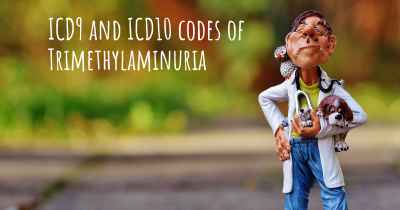What is the history of Trimethylaminuria?
When was Trimethylaminuria discovered? What is the story of this discovery? Was it coincidence or not?

Trimethylaminuria, also known as fish odor syndrome or TMAU, is a rare metabolic disorder characterized by the inability to break down trimethylamine (TMA), a compound with a strong fishy odor. This condition was first described in medical literature in the 1970s, but its history can be traced back to ancient times.
The earliest recorded cases resembling trimethylaminuria date back to ancient Egypt, where individuals were reported to have a persistent fishy body odor. However, it wasn't until the 1970s that the condition was formally recognized and studied in detail.
Dr. J.R. Humbert, a dermatologist from Denver, Colorado, is credited with identifying and describing trimethylaminuria as a distinct disorder in 1970. He encountered a patient who complained of a fishy odor that persisted despite maintaining good personal hygiene. Dr. Humbert conducted extensive investigations and discovered that the odor was caused by the presence of excessive trimethylamine in the patient's urine, sweat, and breath.
Following Dr. Humbert's initial discovery, further research was conducted to understand the underlying causes and mechanisms of trimethylaminuria. Scientists discovered that the condition is caused by a genetic defect that impairs the function of an enzyme called flavin-containing monooxygenase 3 (FMO3). This enzyme is responsible for breaking down trimethylamine into an odorless compound called trimethylamine N-oxide (TMAO).
Dr. George Preti, a chemist at the Monell Chemical Senses Center in Philadelphia, played a crucial role in advancing the understanding of trimethylaminuria. In the late 1980s, he collaborated with Dr. Humbert to investigate the condition further. Their research revealed that trimethylaminuria is an inherited disorder caused by mutations in the FMO3 gene.
Over the years, several cases of trimethylaminuria have been reported worldwide, helping to raise awareness about the condition. The prevalence of trimethylaminuria varies among different populations, with estimates ranging from 1 in 10,000 to 1 in 200,000 individuals.
Trimethylaminuria can have a significant impact on affected individuals' quality of life, as the persistent fishy odor can lead to social isolation, depression, and anxiety. There is currently no cure for the condition, but various management strategies can help minimize symptoms.
Diagnostic methods for trimethylaminuria have also evolved over time. Initially, the diagnosis was primarily based on the characteristic fishy odor and the presence of excessive trimethylamine in bodily fluids. However, advancements in genetic testing have made it possible to identify specific mutations in the FMO3 gene, confirming the diagnosis.
Research into trimethylaminuria has also shed light on the broader role of the FMO3 enzyme in human metabolism. It has been discovered that FMO3 is involved in the breakdown of various other compounds, including medications and environmental toxins. This finding has implications for drug metabolism and personalized medicine.
Today, organizations such as the Trimethylaminuria Foundation and the Monell Chemical Senses Center continue to conduct research, raise awareness, and provide support for individuals affected by trimethylaminuria. Ongoing studies aim to uncover new treatment options and improve the understanding of this rare metabolic disorder.








